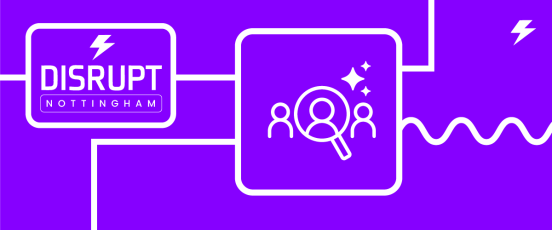Why the future of work will rely on employee wellbeing

A company's success, from productivity to profitability, depends on a workforce that is capable, motivated and thriving. If organisations want to avoid generating a burned-out, disengaged and unwell workforce, wellbeing must be a strategic priority – not just an add-on.
The importance of employee wellbeing
Given that the average person will spend around 90,000 hours at work during their lifetime, organisations can no longer ignore the impact that work has on an individual’s wellbeing. According to psychologist and wellbeing expert Dr Justin D Henderson, “The psychological stressors that you’re subjecting yourself to for eight or 10 hours a day, every day, five days a week, have a collective erosion on our mental and physical health over time.”
Expectations of the workplace are changing, with more and more employees seeing mental health and workplace wellbeing as a priority. Now’s the time for organisations to go beyond superficial wellbeing initiatives and implement comprehensive wellbeing strategies that fully address how work can impact mental and physical health.
What is employee wellbeing?
Employee wellbeing involves the following three areas:
1. Physical
The ability to maintain a healthy and balanced life, free from stress and excessive fatigue. Sleep, nutrition, exercise and making healthy choices all play a part in physical wellbeing.
2. Mental
This encompasses mental health and an employee’s emotions. This can also extend to social wellbeing: the extent to which an employee feels a sense of belonging, connection and positive relationships with colleagues, management and the organisation.
3. Financial
Defined as feeling secure and in control of one’s finances, both daily and for the future. Financial worries can often be all-consuming and distracting, impacting both productivity and mental health and wellbeing.
Employers have a responsibility to take a holistic approach to their wellbeing strategy, addressing all three areas of wellbeing to ensure that employees feel valued and supported at work.
Benefits of wellbeing in the workplace
Here are just some of the positive impacts that wellbeing has on employee experience, performance and retention:
- Increased motivation and productivity
- Reduced burnout and absenteeism
- Improved job satisfaction and retention
- Stronger teamwork and collaboration
- Enhanced creativity and innovation
- Positive work culture
- Improved mental health
- Reduced workplace accidents
By making wellbeing a strategic priority, you’ll foster a more positive work environment for individual employees, while also boosting organisational success and driving high performance.
Three ways to use technology to improve employee wellbeing
According to Dr Henderson, “Tech and AI could help us do many aspects of our jobs that we might find incredibly stressful and time consuming,” resulting in “people being able to engage in work that’s more meaningful”. Technology is now so integral to our daily lives, so let’s break it down into three ways you can use it to support employee wellbeing:
1. Offer financial wellbeing support
A report from Wagestream has found that 70% of UK employees are worrying more about money, so giving employees transparency and real-time visibility to enable financial planning is key. For example, you could offer employees flexible pay, allowing them to access a percentage of their earned wages throughout the month. This allows them to cover unexpected costs and pay bills in a way that's part of a larger, sustainable budgeting strategy.
In addition to providing on-demand pay for employees, you could also invest in a real-time payroll platform. Long-gone are the days of employees only being able to access their payslip at the end of the month. With a real-time payroll system, employees can see exactly how much money they are earning as they’re earning it, giving them total peace of mind. With real-time insights, employees have a better understanding of their interactive payslip, from overtime and expenses to tax and salary sacrifice, which improves their financial wellbeing.
2. Hold regular check-ins
Check-ins are regular performance catch ups between an employee and their line manager, giving them the opportunity to raise any wellbeing issues and discuss developmental needs and workloads. Continuous two-way interaction between managers and team members helps foster a positive working relationship and gives the employee reassurance that they’re on the right track.
With an HR platform like People First, employees or managers can schedule check-ins, add notes or performance ratings, and even use AI to generate talking points. Giving employees a central place to view their check-in notes and performance data can support their wellbeing and happiness at work.
3. Give recognitions
Using an employee engagement platform like People First, individuals can post recognitions to the newsfeed to acknowledge excellent work or say thank you to a colleague. Being recognised for good work can positively impact wellbeing by allaying any anxieties employees have and showing them they’re valued at work.
Final thoughts
Workplace wellbeing is not a quick fix or a silver bullet. To truly enable high performance, employee wellbeing needs to be embedded into organisational principles and employee experience strategy.
As Dr Henderson puts it, “We have to establish a workplace culture that appreciates and validates people, knowing that policies and procedures may change, but those core cultures and values will not.”
This is a shortened version of an article produced by and published on Telegraph.co.uk – read the full article here.
Register now for our World of Work 2050 webinar series to watch our webinar with Shaw Education Trust's CPO Stephen Watson as he reveals his top strategies for making wellbeing a priority in your organisation. With one registration you’ll also get on-demand access to the other episodes in the series as we explore all the emerging trends shaping our working world.



